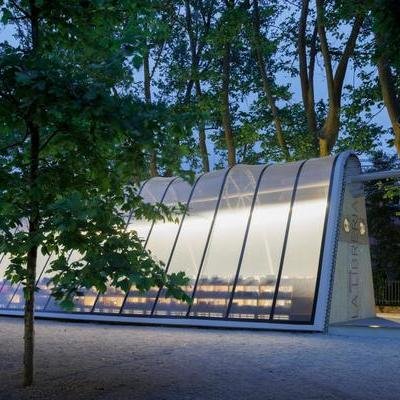This La Libreria project, designed by Diller Scofidio + Renfro Architects, is based on a concept by Diane von Furstenberg and is currently being showcased at the Venice Architecture Biennale. The project’s execution relied on a special textile membrane called STFE developed by the Serge Ferrari Group, a French materials manufacturer. (STFE is made of polyarylate, a type of durable polyester with good optical clarity and UV resistance.)
La Libreria is a creation by the American firm DS+R Architects, aiming to promote reading and access to knowledge. Its lightweight and mobile design allows the library to be moved and brought directly to its audiences. It draws inspiration from tensile lightweight architecture, and in particular from the experimental work of French engineer Robert Le Ricolais in the mid-20th century, who explored the concept of “tensegrity.”
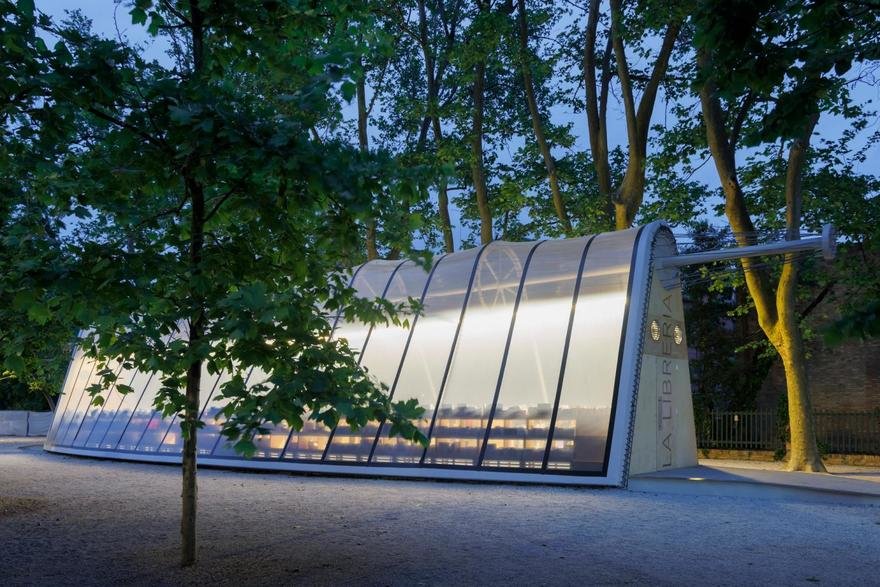
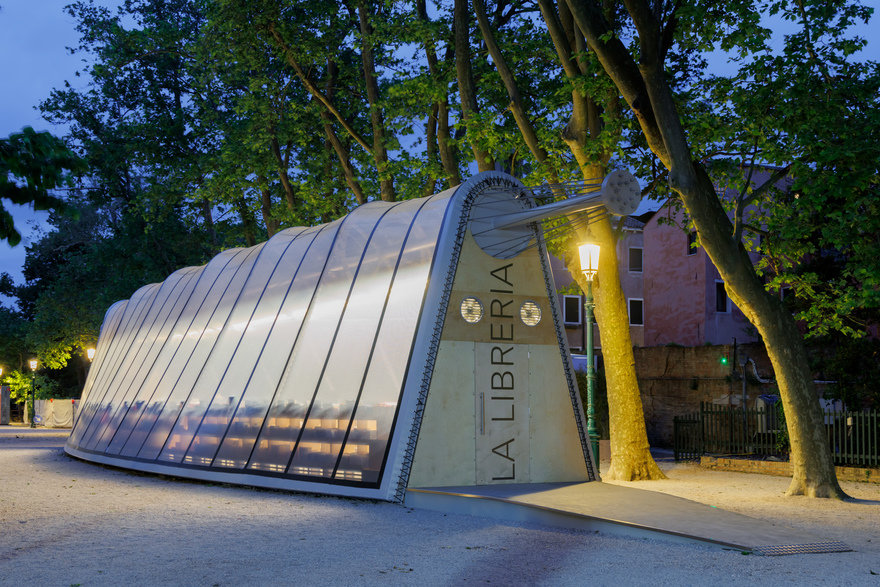
“We considered several ideas around nomadic, tent-like structures,” says DS+R Architects’ Matt Ostrow. The main challenges were: it had to be quick to assemble and dismantle, potentially reusable, and respect a tight budget. The site itself also posed difficulties for transporting and assembling materials. We wanted people to feel like they were in a garden—even inside. The transparency allows natural light in, which is important since the structure is primarily used during the day. It also connects people to the surrounding environment. But we needed more than just transparency: we also needed shading, durability, and security. Additionally, we had to adapt to the site’s linear constraints, which influenced the overall design.”
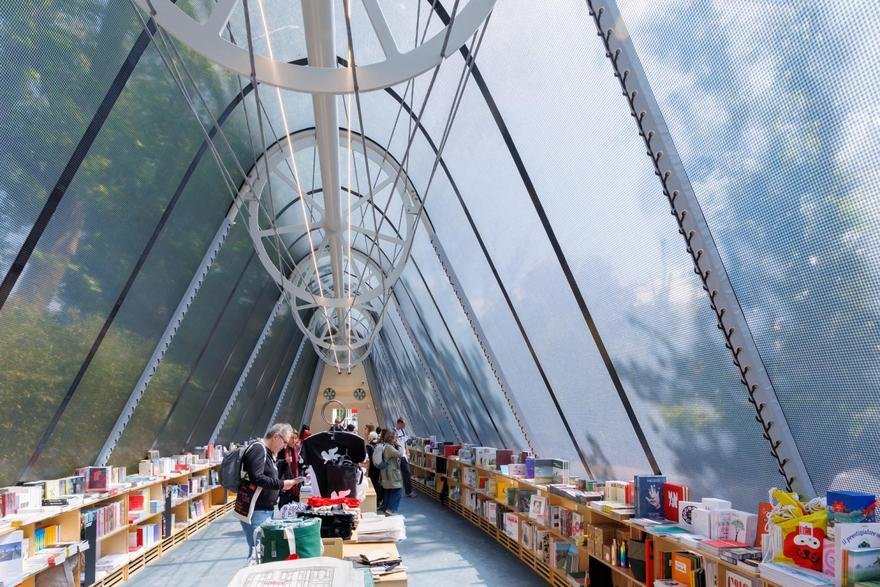
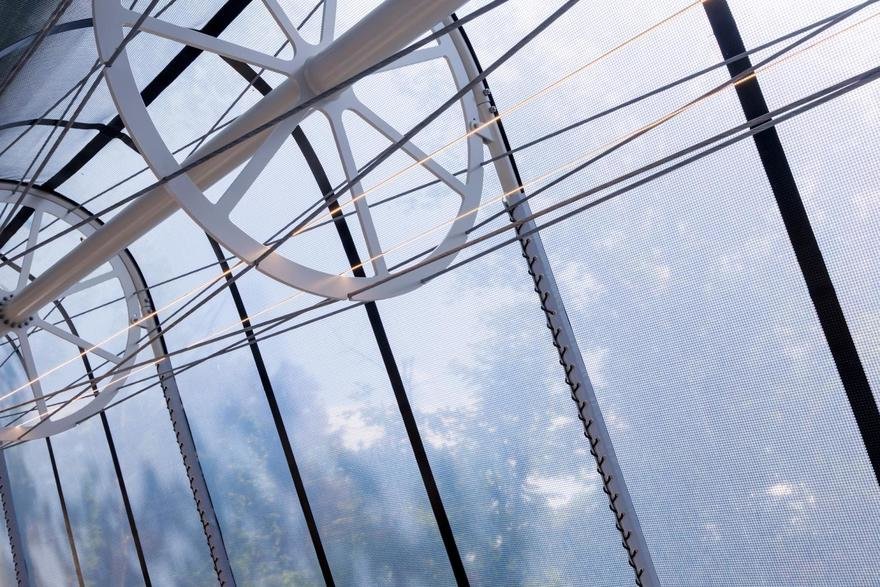
“We naturally began exploring the use of a transparent material for the outer shell. As we were working with a spindle-like system—a 24-meter cable-reinforced steel structure—we knew that deflection would occur and heavy materials would compromise stability. To preserve the span and overall lightness, we turned to a textile membrane. We explored several materials, but many lacked the necessary stiffness or didn’t offer adequate security. We needed something more robust to protect the books and furnishings inside. Ultimately, STFE emerged as the solution, offering greater natural light and improved interior visibility.”
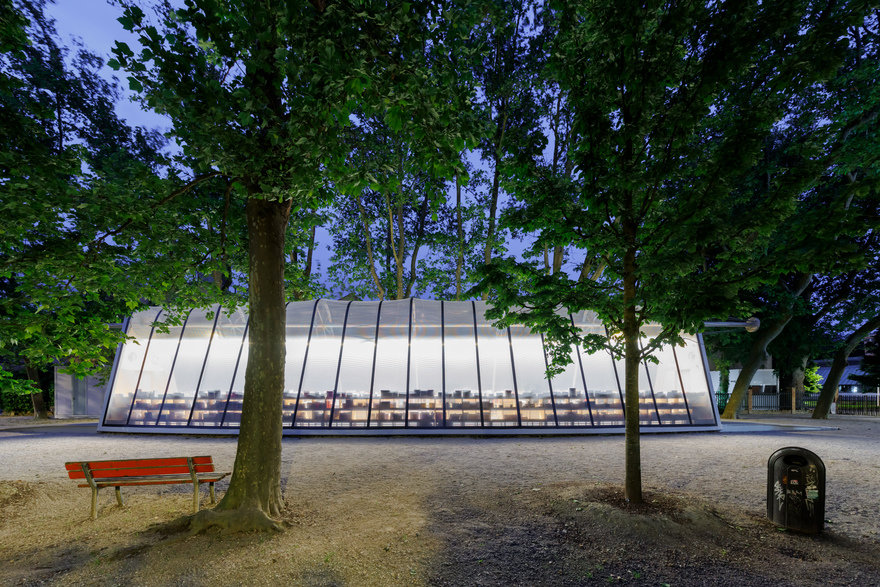
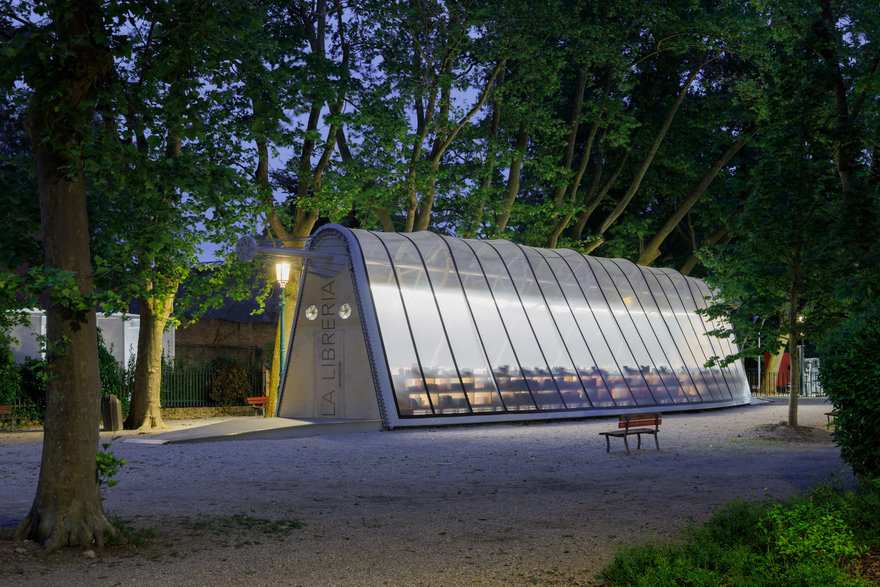
“This project is an experiment. It embodies themes we’ve explored in past proposals: creating social spaces centered around books and learning—not digital media. It’s like an outreach library concept—something that could pop up in a park or public space rather than a central, permanent building. For the Biennale, we also wanted to experiment with structure. The lightweight, cable-stayed system allowed us to enclose a significant area without heavy components. And of course, the Biennale encourages experimentation—so the use of advanced materials and a design intended for multiple future lives was a natural fit.”
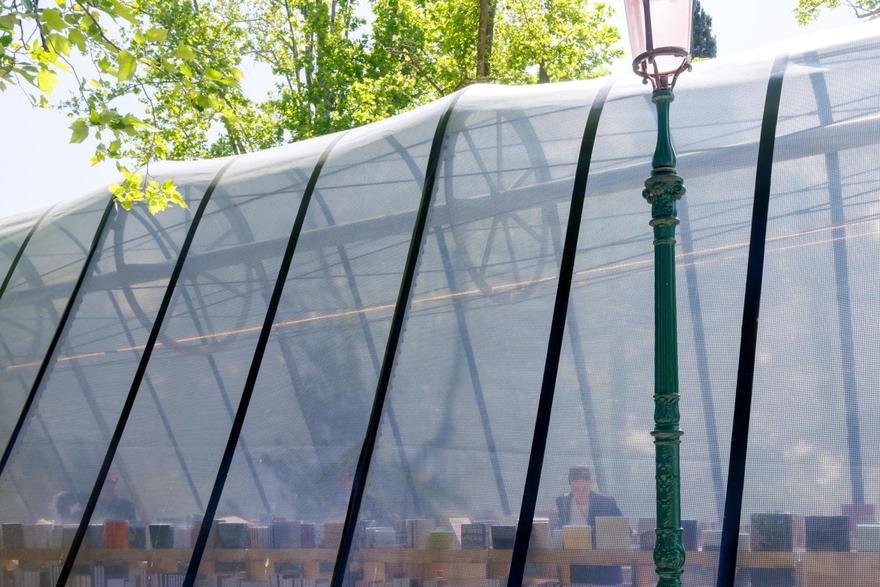
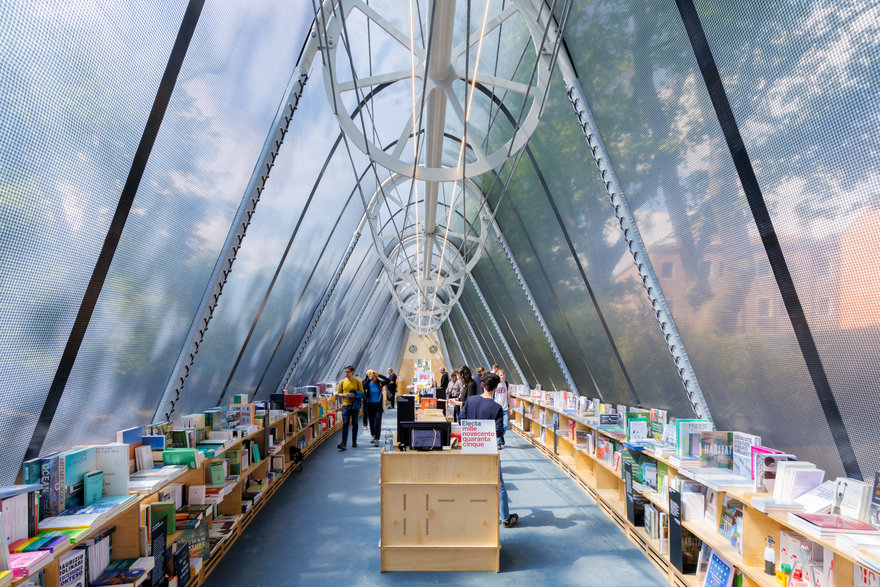
Says the manufacturer: “STFE is extremely lightweight—ten times lighter than glass—and reinforced with polyarylate fiber, providing high structural strength. This composite material can span wide distances without the need for extensive secondary support structures. Its transparency, strength, and flexibility make it ideal for maintaining tension while allowing for great freedom in the final shape. These characteristics make it an optimal solution for meeting the technical demands of advanced architectural applications.”
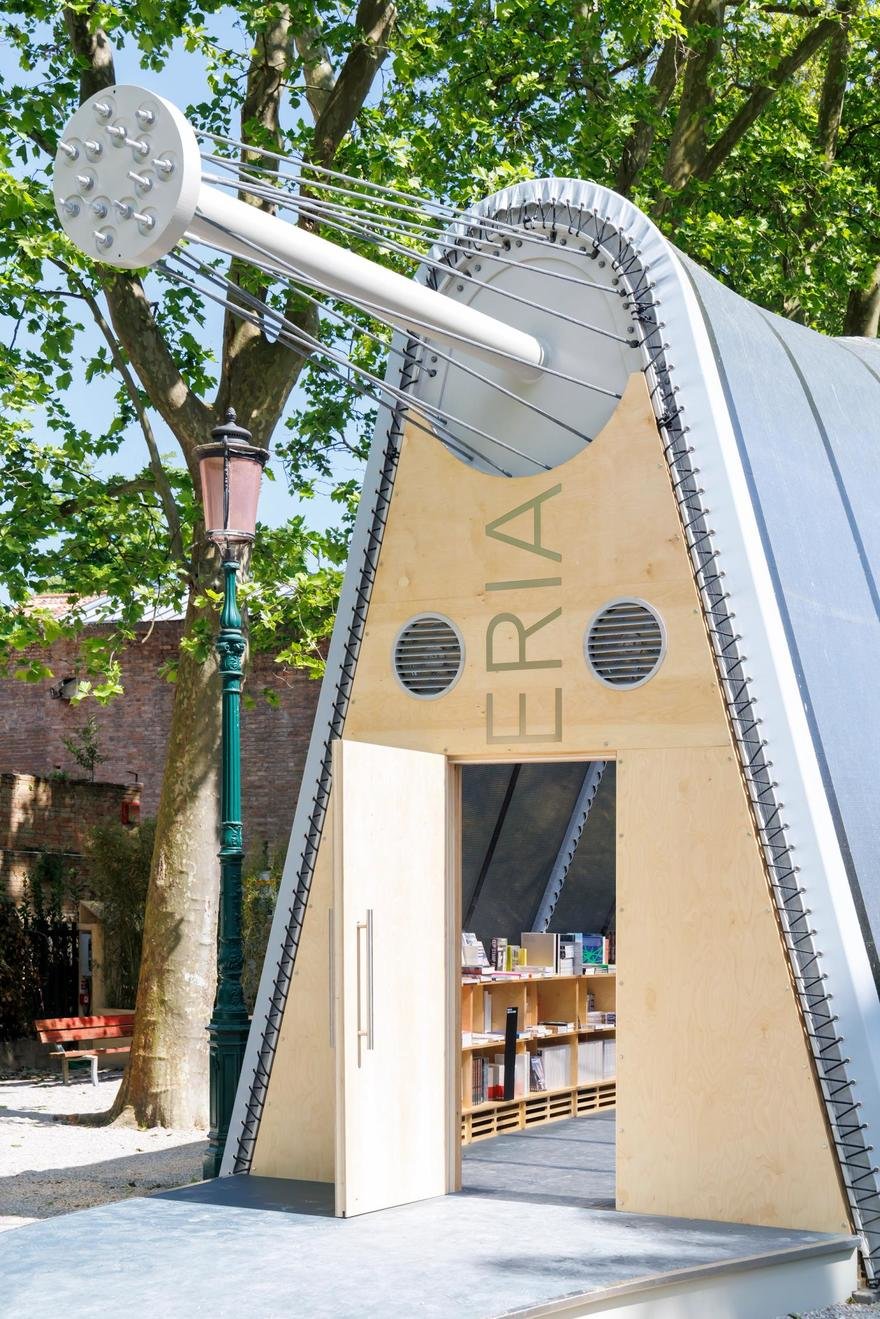
The material looks ideal for greenhouse construction, but I suspect its cost is more in line with high-end architecture projects.

